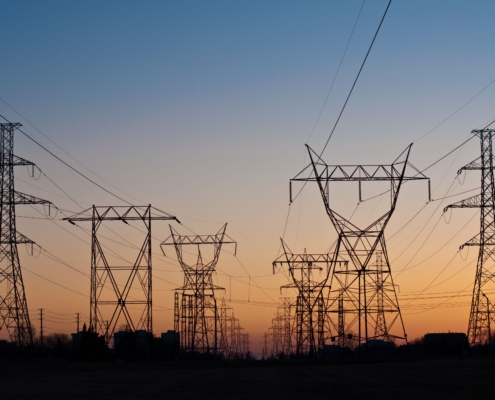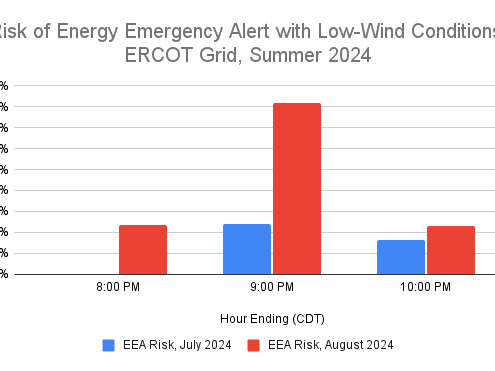Last Updated on July 24, 2022 by Mary Pressler
Do Deregulated States Have Cheaper Energy Prices?
The Answer Depends on Several Factors…
The main purpose of energy deregulation is creating a competitive market, where consumers can choose their gas and electricity providers. Many states have deregulated electricity, others have deregulated gas, and some have deregulated both services.
There has been plenty of debate around the impact of deregulation: Does it decrease electricity prices, or does it actually increase them? If you look through the list of states with deregulated electricity, you will notice that some have kilowatt-hour prices below the national average, while others have above-average prices. The following table compares the average electricity price in the US with those of all 15 the deregulated states:
| State | Residential kWh Price | Commercial kWh Price |
| US Average Prices | 13.29 cents/kWh | 11.13 cents/kWh |
| 1) Connecticut | 22.74 cents/kWh | 16.98 cents/kWh |
| 2) Delaware | 12.11 cents/kWh | 9.50 cents/kWh |
| 3) Maine | 16.42 cents/kWh | 12.53 cents/kWh |
| 4) Massachusetts | 23.29 cents/kWh | 16.81 cents/kWh |
| 5) New Hampshire | 19.23 cents/kWh | 15.98 cents/kWh |
| 6) Texas | 11.49 cents/kWh | 10.41 cents/kWh |
| 7) Illinois | 13.87 cents/kWh | 9.80 cents/kWh |
| 8) Maryland | 12.84 cents/kWh | 10.07 cents/kWh |
| 9) New Jersey | 15.58 cents/kWh | 12.33 cents/kWh |
| 10) New York | 18.03 cents/kWh | 14.97 cents/kWh |
| 11) Ohio | 12.41 cents/kWh | 9.78 cents/kWh |
| 12) Pennsylvania | 13.25 cents/kWh | 8.66 cents/kWh |
| 13) Rhode Island | 23.35 cents/kWh | 16.18 cents/kWh |
| 14) Michigan | 17.17 cents/kWh | 12.21 cents/kWh |
| 15) Virginia | 11.71 cents/kWh | 7.77 cents/kWh |
*Source: US Energy Information Administration
As you can see in the previous table, deregulated states have kWh prices both above and below the national average. When comparing electricity prices in different states, we must also consider the following factors:
- The energy mix used by each state.
- Grid costs: transmission, distribution, maintenance, expansions, upgrades, etc.
- Geography: does the state depend on imported energy sources?
Electricity Prices Are Affected by the State Energy Mix
There are many generation technologies, each with advantages and disadvantages, and they also differ in cost. For example, solar power comes with a high upfront investment, but there are only minor maintenance costs over time. On the other hand, conventional power stations that burn coal or natural gas have an ongoing fuel cost during their entire service life.
Many of the states with cheap electricity use plenty of coal power and hydropower. However, coal power is highly polluting, and hydropower requires very specific site conditions:
- The emissions of coal power plants are typically above 1 kg of CO2 for every kWh of electricity generated.
- Hydropower requires a river with enough water volume and specific terrain features. There is also a major environmental impact, even without fossil fuel combustion, since hydroelectric stations flood ecosystems with their dams.
Many of these power plants are decades old, which means that developers recovered their investments long ago. As a result, there are only operation and maintenance costs to deal with, achieving a very low generation cost. On the other hand, new projects must cover capital expenditures and loan payments, which increase the cost per kilowatt-hour.
Solar panels and wind turbines can now compete with the cost of fossil fuels when used in utility scale projects. However, these technologies depend on variable inputs – sunlight and wind – and they must be combined with other types of generation to achieve a reliable power supply.
Natural gas turbines can quickly increase or decrease production to follow demand, and they can compensate for the variable output of renewables. However, gas-fired generation can become very expensive in states that depend on gas imports from other parts of the US.
Electricity Prices Are Affected by Power Grid Costs
Power grids are fundamental in modern society, since they deliver electricity from power plants to homes and businesses. However, the grid has a high ownership cost, which is added to your electricity bills. Power grid costs are unavoidable in both regulated and deregulated states, and they are affected by factors like population distribution and geography.
In states with deregulated electricity, you can choose the company that provides your electricity. However, the utility company in charge of the power grid is determined by your geographic location.
- For example, Texans living in Houston have many providers to choose from, but there is only one transmission and distribution utility, which is CenterPoint Energy.
- Regardless of the electricity provider you choose, the local TDU will add a fee to the kilowatt-hour price. You can think of this as the shipping cost of electricity.
Although TDUs are subject to regulations, they are independent from each other. The cost structure of the local utility will affect your electricity prices, and the only way to change your TDU is by moving to the service territory of another company.
Electricity Prices Are Affected by Local Resources and Geography
Not all states have the same energy resources, and fossil fuel refining capacity is concentrated in certain regions. As a result, some states are net producers of energy, while others are net consumers that depend on imports.
According to a study by Commodity.com, the top ten energy exporters in the US are Wyoming, North Dakota, West Virginia, New Mexico, Alaska, Oklahoma, Montana, Pennsylvania, Colorado and Texas. With the exception of Alaska, all these states have electricity prices below the national average.
On the other hand, if you check energy data for states with expensive electricity, they tend to be net importers. This is the case for Connecticut, Massachusetts, Rhode Island and California – all four states have average electricity prices above 20 cents/kWh in the residential sector, and they all depend on natural gas imports.
- Connecticut, Massachusetts and Rhode Island have no natural gas production. However, all three states get most of their power from gas-fired generation.
- In California, natural gas is the second-largest electricity source after renewables, representing 40% of generation. However, local gas production can only meet around 10% of demand, and the rest must be exported.
The availability of local energy resources is also a factor that determines electricity prices, along with the generation mix and power grid costs.
In Conclusion
The effect of deregulation on electricity prices has been widely debated, and there are organizations on both sides of the argument. However, the electric industry is complex and kilowatt-hour prices are determined by multiple factors. These include the mix of energy resources used to generate electricity, local grid costs, and the availability of energy resources in each state










